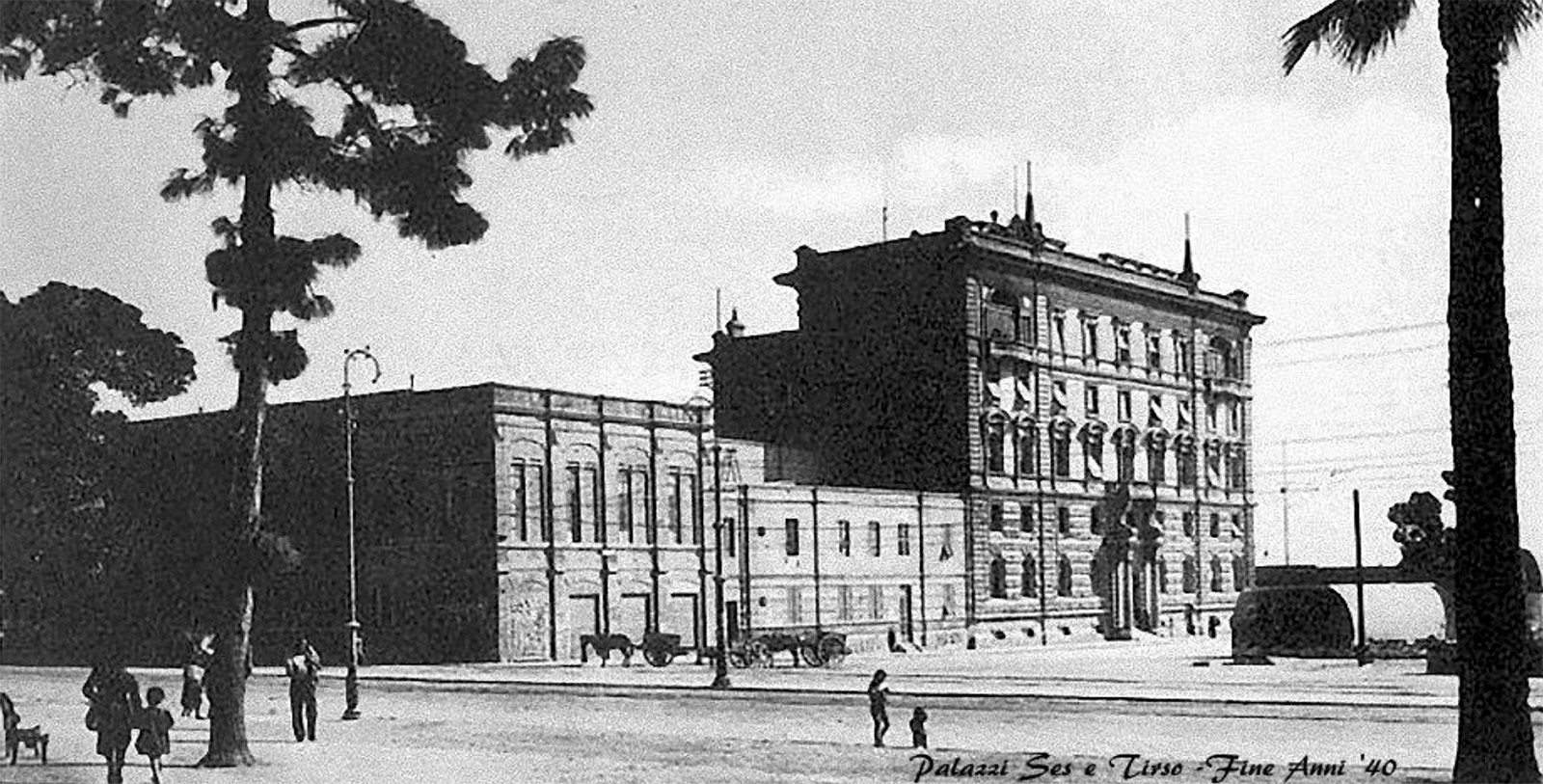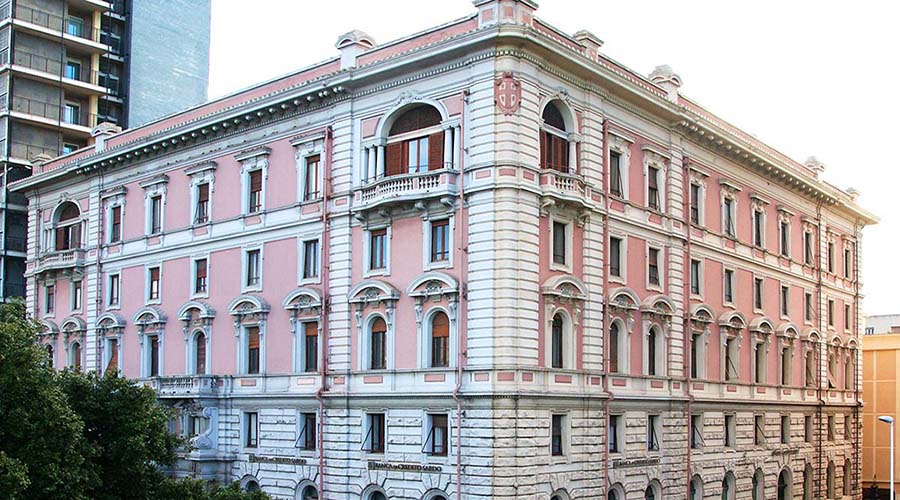Receive for Free - Discover & Explore eNewsletter monthly with advance notice of special offers, packages, and insider savings from 10% - 30% off Best Available Rates at selected hotels.
history
Discover the beautiful Art Nouveau architecture of the Palazzo Tirso Cagliari – MGallery.
Palazzo Tirso Cagliari – MGallery, a member of Historic Hotels Worldwide since 2022, dates back to 1924.
VIEW TIMELINEA member of Historic Hotels Worldwide since 2022, Palazzo Tirso Cagliari – MGallery has stood as a cherished local landmark for a century. Its origins specifically harken back to the early 1920s, when Sardinia itself was undergoing a period of great industrial growth. In the aftermath of World War I, the entire island saw a rush of investment from the Italian mainland that introduced all kinds of businesses in many of its cities and towns. Among the communities affected the most by this development was Sardinia’s historic capital city, Cagliari. Great companies quickly established their own regional headquarters throughout the metropolis, creating towering buildings that dramatically transformed Cagliari’s ancient skyline. Among the structures developed at the time was a beautiful Art Nouveau-inspired office building created by noted Italian engineer Flavio Scano. Scano began constructing the edifice in the heart of Cagliari in 1924. Selecting a plot of land along the gorgeous Piazza Deffenu, he gradually raised a stunning multistory building that was hailed as a masterpiece. Indeed, the structure contained numerous granite columns, scenic pediments, and even ornamentation that harkened back to Sardinia’s extensive history. Perhaps Scano’s greatest accomplishment with the building was his ability to reinforce its entire skeleton with concrete. In fact, the structure was the first one in all Cagliari to use such a design principle!
After three years of continuous construction, Flavio Scano debuted his new building as the Palazzo Tirso to great acclaim in 1927. It immediately became one of Cagliari’s most recognizable landmarks, thanks to its stunning architecture and enviable location. This reputation also made the Palazzo Tirso an incredibly desirable place to work, with the Sardinian Electricity Company and the Electrical and Hydraulic Companies moving in almost as soon as the structure opened. The Palazzo Tirso subsequently served as headquarters of the two businesses for many years thereafter, especially as they engaged in the pivotal task of supplying electricity to all Sardinia. Over the next several decades, the historic Palazzo Tirso would host many other prominent Italian companies, namely prolific branches of the Bastogi S.p.a. and the Instituto Bancario San Paolo di Torino. Then, in 2019, renovations began to transform the hallowed office complex into a spectacular boutique hotel. Over the next three years, the talented architectural team at Studio Marco Piva gradually turned many of the interior commercial spaces into 85 extravagant guestrooms replete with only the finest amenities and décor. Many other areas were brilliantly reborn as meeting spaces, public lounges, and wonderful restaurants. An entire spa facility was even installed within the building’s reimagined layout. Known as the “Palazzo Tirso Cagliari – MGallery” today, this fantastic historic hotel is truly a fascinating place to experience when visiting Sardinia.
-
About the Location +
Like the rest of Sardinia, Cagliari is replete with history. Its origins harken back millennia to the Bronze Age, during which time the earliest known inhabitants first settled the region. Those individuals—known as the “Nuragic”—specifically resided around the area’s natural harbor, enabling them to participate extensively in the Mediterranean’s lucrative trade network. (Indeed, recent archeological excavations have discovered many exotic goods from the era, suggesting that the locals were incredibly vigorous traders.) Nevertheless, the Nuragic society that occupied the location was conquered by the Phoenicians in the 8th century B.C. The Phoenicians proceeded to create a small merchant colony upon the site that gradually evolved into a moderately sized town called “Cagliari.” But in the 5th century B.C., the Carthaginians seized the community and incorporated it into its own sprawling civilization. Cagliari flourished, evolving into a full-fledged metropolis around the eve of the Punic Wars. In fact, many public works had spread throughout Cagliari, with the most notable example being the iconic Tuvixeddu necropolis.
However, all of Sardinia—including Cagliari—became a part of the budding Roman Empire in the wake of the First Punic War. While the city continued to be a major port under Roman rule, it also functioned as the principal administrative center for the entire island. This cultural significance inspired countless Romans to move to Cagliari and invest heavily into its development. As such, the Romans spearheaded their own municipal building projects, including a magnificent amphitheater that had a façade measuring 65 feet in height. Cagliari remained heavily ingrained in Roman society for generations thereafter, with its residents becoming involved in various political events. (Among the most notable was their noteworthy support for Julius Caesar amid his war against rival statesmen Pompey.) But when the Rome collapsed throughout the 5th century A.D., Cagliari fell to the various Germanic tribes that had continuously attacked the Italian Peninsula nearby. Cagliari was then captured by the Byzantine Empire following its own conquest of Sardinia a century later. A successor to the earlier Roman Empire, the Byzantines proceeded to elevate Cagliari as the royal seat for one of its dependencies, the Judicate of Cagliari.
Despite the support the Judicate received from the Byzantine Empire, it was eventually overthrown by the Republic of Pisa in the 13th century. Wishing to prevent a similar fate, the Pisans proceeded to raise many imposing fortifications around the city. Perhaps the most impressive bastion they built was the mighty Castel di Castro, which loomed significantly over most of Cagliari. In consequence, Cagliari’s economic output (and population) dwindled considerably, with many coming to know it essentially as a massive citadel. Unfortunately for the Republic of Pisa, the defenses failed to deter the armies of King Alfonso IV of Aragon. Invading the island in 1324, King Alfonso ultimately defeated the Pisans following a devastating two-month-long siege of the Castel di Castro. Now under Aragonese control, Cagliari soon emerged as the capital for another client state called the “Kingdom of Sardinia.” Cagliari retained this status for many years thereafter, even once the Kingdom of Sardinia was absorbed into the greater Spanish Empire during the 15th century.
In 1718, Cagliari assumed the role of national capital when the Kingdom of Sardinia achieved its independence after the Spanish War of Succession. Cagliari subsequently underwent a prolonged renaissance, which saw many of its current neighborhoods designed and most of its medieval fortifications disassembled. Even though Cagliari now enjoyed great cultural importance, true modern growth did not occur until the island had joined the modern Italian nation-state amid the Italian Wars of Unification. Architects arrived from the mainland and initiated another period of construction that saw Cagliari’s port and central business district modernized. The work also encouraged countless Italian businesses to open offices and stores throughout the city, making it yet again one of the most prosperous in the region. Cagliari has since continued to be among Italy’s most vibrant destinations. Numerous contemporary travelers have relished visiting the city to explore the fascinating landmarks that chronicle its rich heritage, such as Bastione San Remy, Torre dell’Elefante, and Il Castello.
-
About the Architecture +
Despite being constructed in the mid-1920s, the Palazzo Tirso Cagliari – MGallery nonetheless stands today as a brilliant example of Art Nouveau architecture. Part of the greater cultural phenomenon known as the “Belle Époque,” Art Nouveau architecture was among the most popular styles in Europe from the 1890s till the outbreak of World War I. It quickly appeared across the continent, referred to by such names like “Glasgow Style,” “Modern Style,” and “Sezessionsstil.” Some of Europe’s most prominent architectural minds employed Art Nouveau architecture, too. Perhaps the greatest example was Hector Guimard, who used the style to create his wonderful Castel Béranger. The term itself was derived from an article published in the L’Art Moderne to introduce the work of architectural collective Les Vingt toward the end of the 19th century. Architects who embraced the Art Nouveau were among a growing demographic of intellectuals that yearned to create novel artistic forms that broke with the imitative historicism of the past. More importantly, they wanted their new architectural motifs to reflect imaginative creativity, especially as European society became increasingly more structured and industrialized. Over time, those professionals created a design aesthetic characterized by its curvaceous lines and use of organic shapes. Objects from nature were featured prominently throughout the façade of every structure, including the likes of insects and exotic plants. Surfaces often contained terra cotta coverings and ornate tile moldings spread throughout the interior. Sloped arches also defined the windows and doors, while fantastic mosaics existed on nearly every ceiling. Asymmetrical layouts structured many Art Nouveau buildings as well, providing for a unique appearance in many of Europe’s sprawling cities. But Art Nouveau architecture was eventually phased out in favor of a new style known as “Art Deco,” as its emphasis on modernity seemed to better represent the state of Western culture following World War I.


























